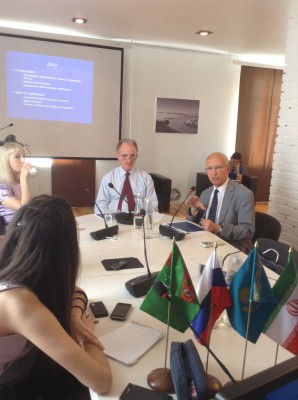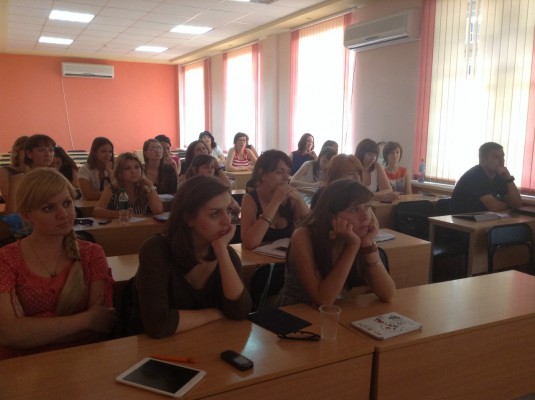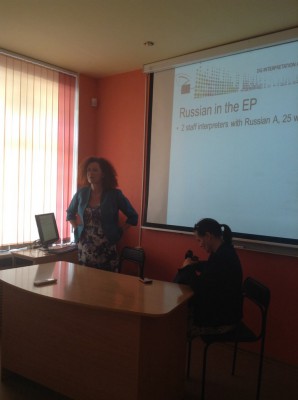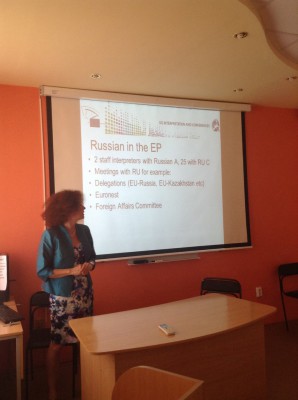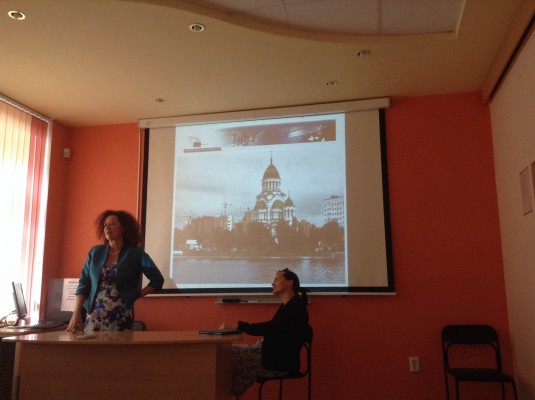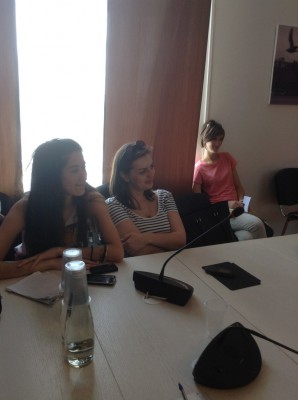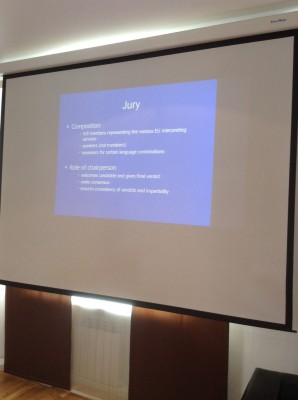European Commission and European Parliament representatives about peculiarities of interpreting work in the EU
On June, 17 and 18 the representatives of DG Interpretation of the European Parliament and European Commission showed presentations about interpreting work at the EU institutions to the MA students of the Caspian Higher School of Interpreting and Translation. The Head of Unit for Multilingualism Support of the DG Interpretation and Conferences of the European Parliament Susanne Altenberg and the Head of Unit for Human Resources of the DG Interpretation and Conferences of the European Parliament Christine Bahr told the students about peculiarities of interpreting work in the European Parliament paying a particular attention to work with non-EU languages and noting an urgency of the Russian language presence in the language competence of interpreters wishing to work in the European Parliament.
The Director General for Interpretation of the European Commission Marco Benedetti and the Head of Unit of Multilingualism and interpreter training support Claude Durand prepared for the students and graduates a presentation about admission test to gain an interpreting position in the European Commission. Claude specifically told the students about the exam procedure as well as about criteria which are used to assess candidates, e.g. an excellent knowledge of mother tongue; ability to form an accurate structure of a sentence, to analyze the acquired information and not to distort it; duration of interpretation (which must always be shorter than the original speech); communicative skills and proper presentation; excellent general knowledge and so on. Marco and Claude also answered students’ questions concerning the date of admission tests, some criteria of interpretation assessment, level of speech difficulty and, of course, the influence of modern technologies on organization of the tests, particularly on correlation between “live” and recorded speeches used at the exam.






